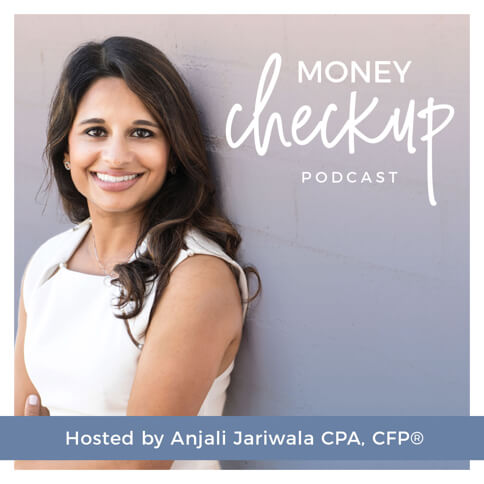As high income earners seek to diversify their investment portfolios, many think about investing in real estate. Getting a good deal on property was easy a decade ago, at the bottom of the real estate market. But as commercial real estate prices rise and interest rates sit poised to climb, investing in real estate is getting much more complex again.
For interested real estate investors who aren’t ready — either financially or personally — to pursue their own deals, private equity real estate offers another way into this market. Investors pool their funds to acquire, finance and renovate properties, then share in the rental income and profits from the eventual sale.
Private equity deals are often brought to physicians, and when you share an office or meet regularly for networking, it’s easy to feel like you should invest alongside others. But it’s essential to do your due diligence on every financial relationship you enter into. It’s not just the fundamentals of the deal that matter, but the track record of the fund managers or principals that you choose to invest with.
How To Vet A Private Equity Fund: IRR and Equity Multiples
Every real estate deal is different, and because real estate private equity funds are collections of deals, every fund is different too. But most funds offer some key metrics to help you understand how well they have historically performed.
The Internal Rate of Return (IRR) is a complex calculation that represents the return on your investment over time. In the simplest terms, if you invest $10 and get back $20, that’s a 100% return — but it makes a big difference whether you got that money back in two months or two years.
IRR is uniform for different types of investments, so it is a good metric to look at when comparing deals. The higher an investment’s IRR, the better. However, it is good to understand the underlying numbers of the calculation to make sure the assumptions are reasonable and not inflated.
The next metric to look at is the equity multiple, or how much of your initial investment will you get back after the investment is complete. In our $10 investment example, investing $10 and getting $20 back would be a 2X equity multiple, or the doubling of your money over the life of the property. A 3X equity multiple represents the tripling of your money. The longer a fund holds onto a property, the lower the IRR but the higher the equity multiple, since investors will collect more rental returns over time.
Fund managers also consider a deal’s leverage point, which is essentially the debt owed on the property. If you buy a home and put 20% down, your leverage point would be 80%, because that’s how much you owe on the property.
Commercial properties that require some improvements ought to have lower leverage points since property owners will need to make capital improvements while servicing the debt. In a rising interest rate environment, if you have a leverage point of 70% or higher and a loan with a variable interest rate after a certain period of time, that debt could get expensive really fast. MLG Capital typically seeks leverage points of 60% to 65%, Rachele Voight told me on Money Checkup in 2019.
Who Should Invest in Private Equity Real Estate?
Diversification is an important part of any investment portfolio. Real estate investing is a popular alternative to the stock market, and while it can be risky, private equity funds offer an opportunity to limit your exposure.
Private equity or real estate syndication deals typically require less cash up front than buying your own properties. Most funds also own a number of different properties and are constantly seeking new ones. Those portfolios may include multiple levels of diversification — properties from various product types, including multifamily, industrial and office; properties from various asset classes; and properties spread across a number of states. Spreading your pooled funds across all those different properties helps reduce risk.
When you invest in a private equity fund, it’s essential to note that your money is going to be tied up for five years or longer. If you’re not prepared for such illiquidity, now may not be the right time to use this investment vehicle.
How Private Equity Deal Flow Works
A real estate syndication refers to a deal in which one person finds a property and another entity provides the necessary funds. When these deals happen one at a time, a direct operator finds the opportunity, collects investor equity, manages the property, then sells it at the opportune time.
Private equity funds buy and sell a variety of properties using pooled funds from a number of investors. To maximize returns, commercial property owners need to be able to select properties with potential, renovate them responsibly, lease them quickly and sell them at the opportune time.
Well-established funds are often approached with investment opportunities. Ideally, fund managers can vet each of these deals and choose to invest in the ones they believe will generate the best returns, while passing on others. The more options fund managers have, the more they can minimize downside risk. Managers of large funds may vet dozens of deals per month, even if they only invest in a handful.
Fees and Returns
Many private equity funds charge an asset management fee, usually falling between 1% and 2% of returns. Some funds may add acquisition, construction, travel, or legal fees.
In other cases, investors commit a certain amount of money and fund managers “call it” as needed. For example, an investor pledges to commit $100,000. If the fund manager calls 20%, each investor sends 20% of what they pledged, in this case $20,000. Fund managers may never need to call the full pledged amount, because as the fund begins to sell properties and generate more returns, fund managers can cover future calls with those returns. The ratio of committed funds to called funds helps you know whether all of your money has been put to work.
At the outset, most private equity funds offer a preferred return, which is a profit distribution that investors receive until a certain rate of return is reached. If a fund offers an 8% preferred return, it needs to reach that return on average — so if its investments only produce a 6% return in the first year, the investor will be owed 10% in a later year. Not all funds pay returns this way, but it is becoming more and more common, to the point that an alternative may be a red flag.
Once the fund reaches its preferred return, most funds begin paying investors all of their capital back.
Then, once investors have their money back, the fund managers split profits with the investors. Investors typically get 70% to 80% of that split and fund managers keep the remainder. Profits typically come from the sales of appreciated properties. This is also known as the “carry phase” or the “promote.”
What is an Accredited Investor?
Investors are not only individuals. You can invest via an LLC, a joint venture, or a trust as well — but each of those entities has different accreditation requirements, and the SEC updates them periodically. The requirements for accreditation are set by federal regulations, not individual firms.
After accreditation, private equity fund managers typically walk investors through a series of legal disclosures. Once all that paperwork is in order, investors are put in the queue for their capital to be called up and invested.
Tax Implications of Private Equity Deals
Private equity real estate deals are usually structured as partnerships, which means investors will receive a K-1 that lists the income and expenses that the fund generated during the tax year. First-time private equity investors often forget about their K-1s because they arrive later than most tax forms. My clients who receive K-1s typically have to extend their returns.
Often, private equity funds don’t generate returns in their first year. However, even if you’re not seeing returns coming through, you may still have to pay taxes on the fund’s activity. Note that you can offset K-1 losses against other investment returns but not against your ordinary income.
Private equity investments are typically done with taxable money in taxable accounts, but sometimes it’s possible to invest this way using a retirement account. Work with a CPA to make sure the fund is structured to do this, because in some cases, if certain types of funds are generated in a retirement account, the whole account can be “tainted” and the funds in it affected.
How To Get Started in Private Equity Real Estate Investing
Real estate is a widely varied asset class that can be as risky as an investor wants it to be. Private equity funds offer a chance to limit some of those risks by pooling investors’ funds and diversifying their investments across product types and geographies. At least, that’s what responsible fund managers do.
Like any asset class, there are great opportunities in the private equity space. There are also bad actors. Do your due diligence not only on the product or the deal itself, but on the community you’re investing with. One key red flag: Make sure the principals are putting money into the fund along with you so you know that they have skin in the game too.
As always, when investing in an asset class, make sure it aligns with your risk tolerance and time horizon for needing the money. Further, ensure that the amount you are planning to invest makes sense with your overall portfolio and asset allocation. Your financial advisor or CPA can review the details of any private equity opportunity with you and determine whether this investment makes sense in your portfolio. No investment is risk-free, so do your due diligence and seek guidance as needed.




